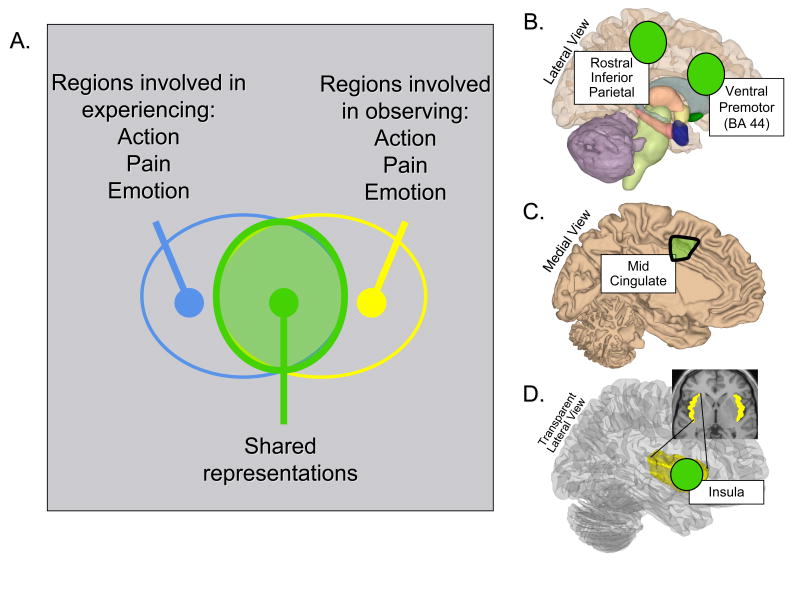Figure 3.
The logic behind and regions implicated in studies of shared representations (see construct 3). A. Venn diagram showing the shared representation logic. The idea is that regions commonly activated during the first person experience of an action, pain, or motion (blue circle) may also be activated when observing others experiencing action, pain, or motion (yellow circle). To the extent that these regions overlap (green circle), the information represented there may play a dual or shared role in supporting the direct experiential understanding of one's own and others actions. B. Semi-transparent lateral view of the right hemisphere showing inferior parietal and ventral premotor regions implicated in the putative “mirror system” for programming and recognizing intentional actions. C. Medial view of the left hemisphere showing a mid cingulate region implicated in pain experience and pain empathy. D. Transparent lateral and axial pop out views of the right hemisphere showing the insular cortex. Highlighted in green are anterior regions of the insula implicated in pain experience, pain empathy, disgust experience and disgust empathy, and negative affective experience more generally. See text for details.

